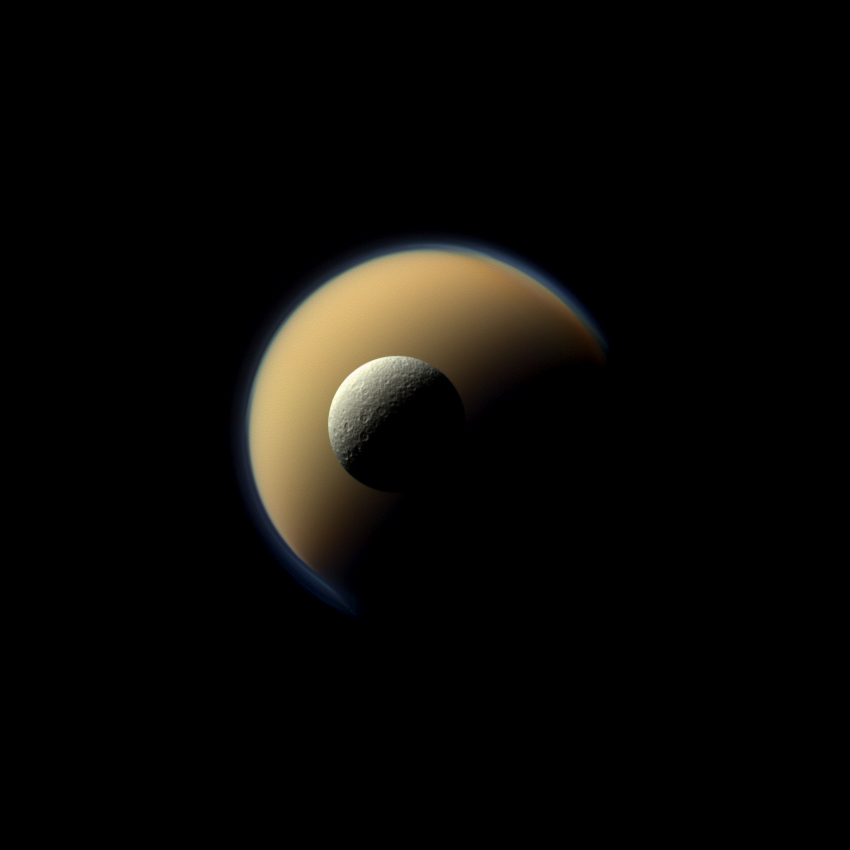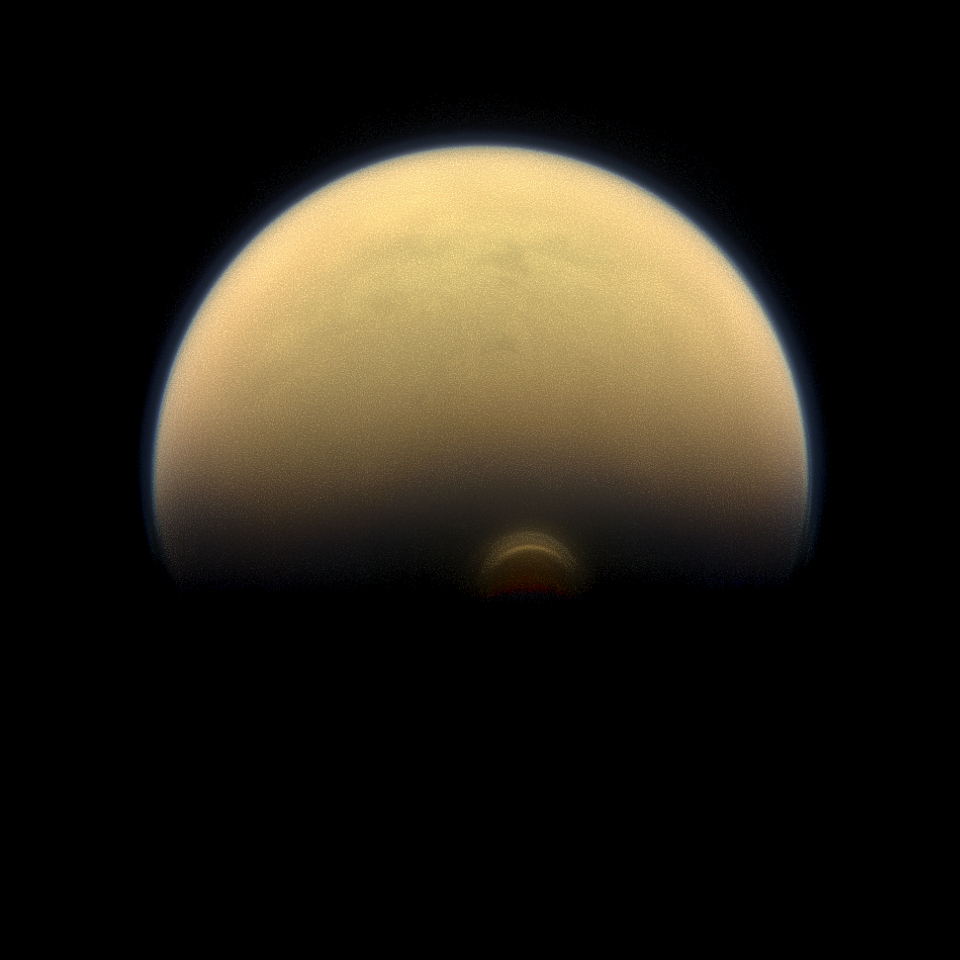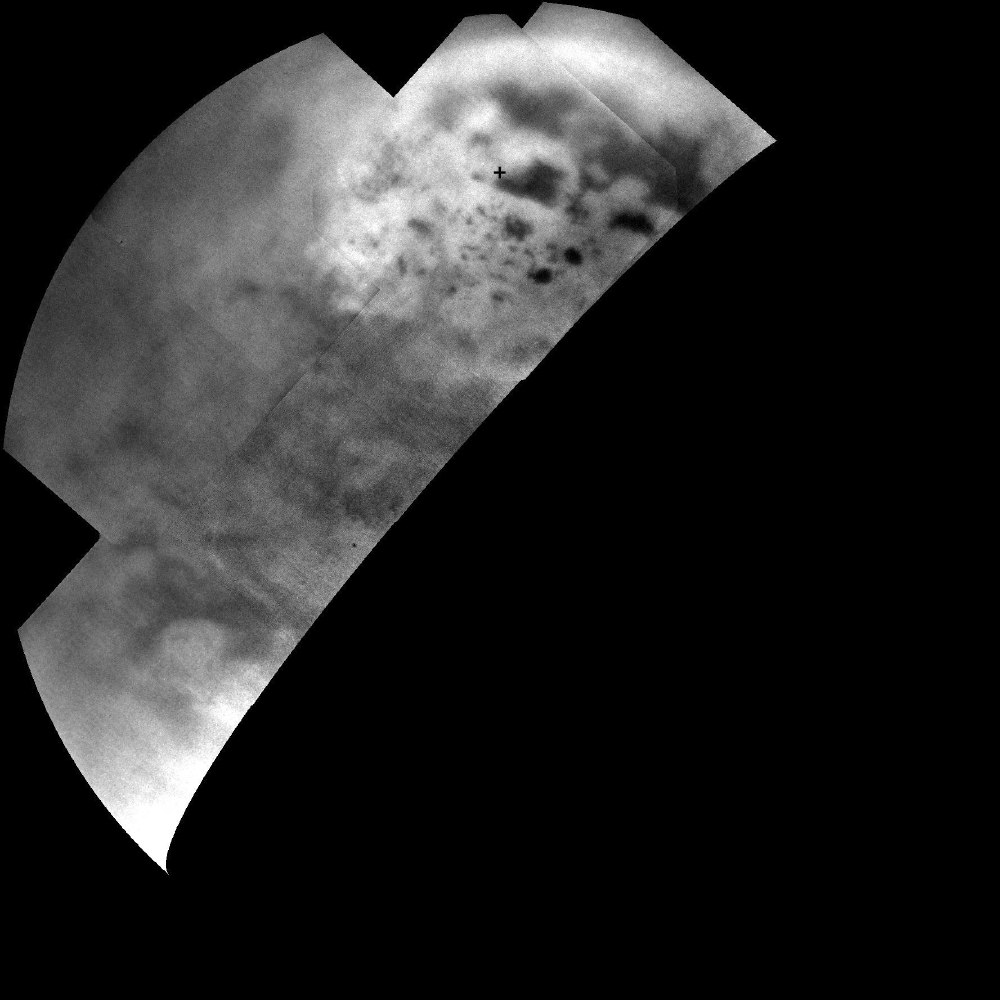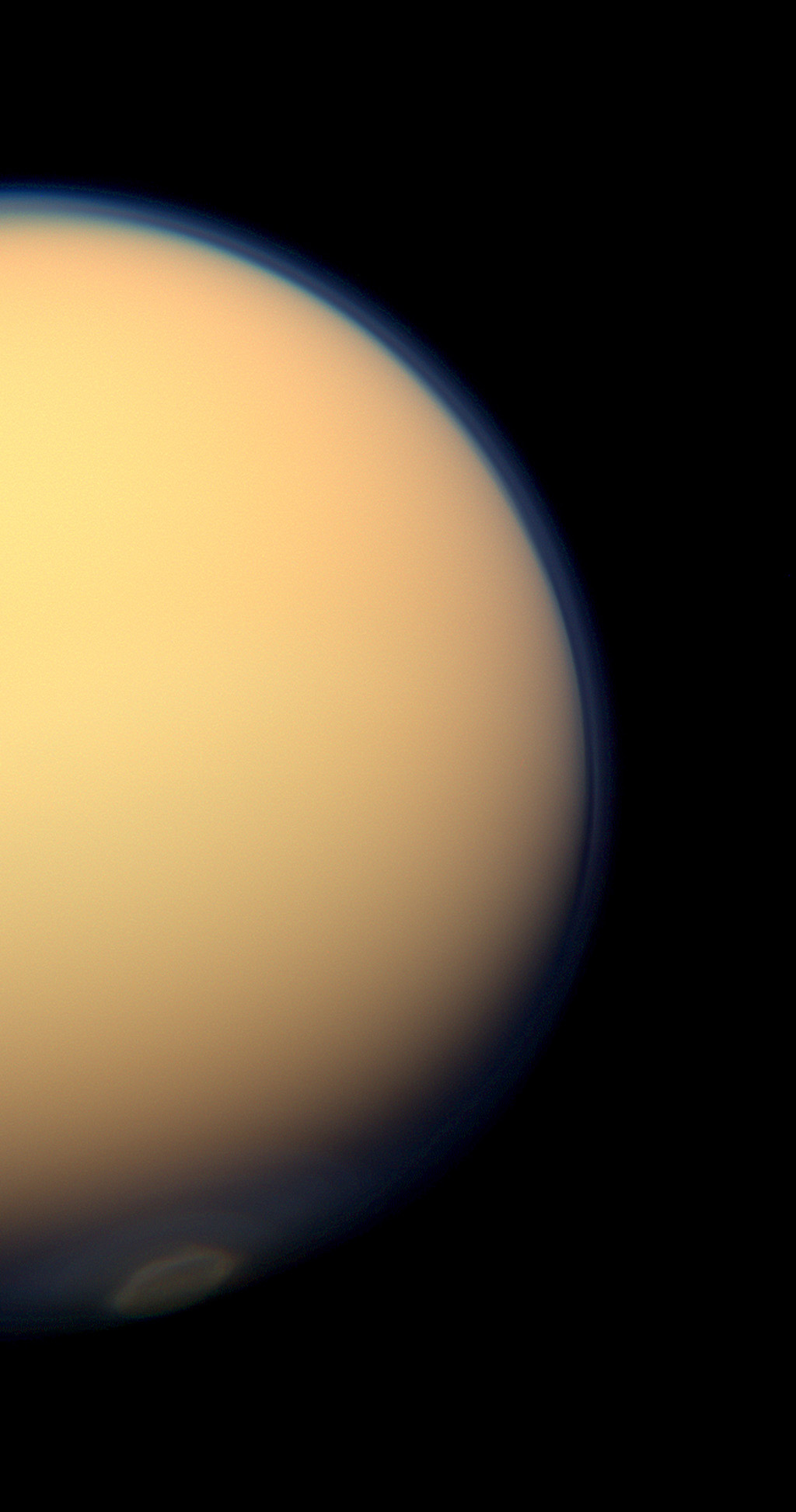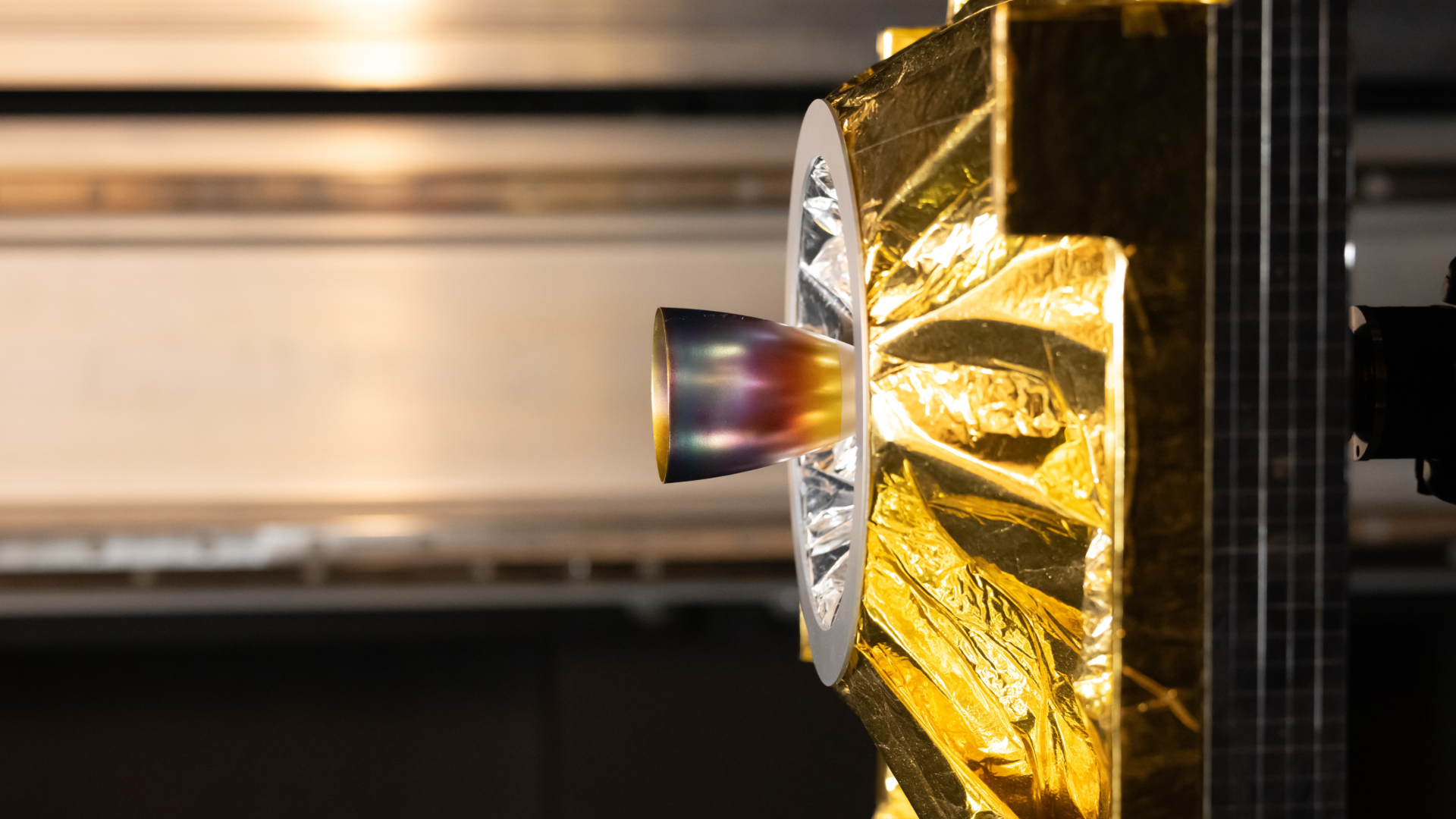Amazing Photos: Titan, Saturn's Largest Moon
Cassini Sees Weird Feature in Titan's Sea
Titan is Saturn's largest moon and the only satellite in our solar system known to harbor a thick atmosphere. See amazing photos of Titan as seen by NASA's Cassini spacecraft. HERE: These three images, created from radar data collected by NASA's Cassini spacecraft, show the evolution of a strange feature in Ligeia Mare, one of the largest hydrocarbon seas on Saturn's giant moon Titan. Read the Full Story.
Titan and Rhea Together
Saturn's largest and second largest moons, Titan and Rhea, appear to be stacked on top of each other in this true-color scene from NASA's Cassini spacecraft released on Dec. 23, 2013. The north polar hood can be seen on Titan appearing as a detached layer at the top of the moon on the top right. This view looks toward the Saturn-facing side of the smaller Rhea. [Read the Full Story Here]
A Stormy Arc on Titan
The south polar vortex at Saturn's moon Titan stands out in the dark south against the orange and blue haze layers as seen by NASA's Cassini spacecraft. This image suggests that the polar vortex clouds form at a much higher altitude, where sunlight can still reach, than the surrounding haze. This image, released on Dec. 23, 2013, was taken on July 30 at a distance of 895,000 miles (1.441 million kilometers) from Titan. [Read the Full Story Here]
Titan's Land of Lakes
NASA's Cassini spacecraft used a special spectral filter to peer through the hazy atmosphere of Saturn's moon Titan and see its strange hydrocarbon lakes. The images for this view, released on Dec. 23, 2013, were taken on Oct. 7 and feature the leading face of Titan as seen in red, green and blue spectral filters combined to create a natural-color view. [Read the Full Story Here]
Titan's Land of Lakes (Annotated)
This annotated view of Titan as seen from NASA's Cassini spacecraft shows the largest hydrocarbon lakes on the Saturn moon, including the largest sea Kraken Mare. Titan's lakes are named for mythological creatures. The images for this view, released on Dec. 23, 2013, were taken on Oct. 7. [Read the Full Story Here]
Titan's Northern Lakes: Salt Flats?
This false-color mosaic, made from infrared data collected by NASA's Cassini spacecraft, reveals the differences in the composition of surface materials around hydrocarbon lakes at Titan, Saturn's largest moon. Image released Oct. 23, 2013. [Read the Full Story on Titan's Lakes Here]
Bird's Eye View of the Land of Lakes
The vast hydrocarbon seas and lakes (dark shapes) near the north pole of Saturn's moon Titan sprawl out beneath the watchful eye of NASA's Cassini spacecraft. Image released Oct. 23, 2013. [Read the Full Story on Titan's Lakes Here]
Breaking space news, the latest updates on rocket launches, skywatching events and more!
Titan's North: The Big Picture
Almost all of the hydrocarbon seas and lakes on the surface of Saturn's moon Titan cluster around the north pole, as can be seen in this mosaic from NASA's Cassini mission. Image released Oct. 23, 2013. [Read the Full Story on Titan's Lakes Here]
Dark Lakes on Bright Titan Landscape
Ultracold hydrocarbon lakes and seas (dark shapes) near the north pole of Saturn's moon Titan can be seen embedded in some kind of bright surface material in this infrared mosaic from NASA's Cassini mission. Image released Oct. 23, 2013. [Read the Full Story on Titan's Lakes Here]
Titan polar vortex
The recently formed south polar vortex stands out in the color-swaddled atmosphere of Saturn's largest moon, Titan, in this natural color view from NASA's Cassini spacecraft. [Full Story]
Titan Atmosphere Season Change
This night-side photo of Titan taken by the Cassini spacecraft shows a buildup of haze over the Saturn moon's south pole (bottom). Cassini has found a build up of haze over the south pole (bottom). New results from Cassini's infrared spectrometer show that air is now sinking at the south pole, leading to increased temperatures at high altitude and a large enrichment in trace gases. Image released Nov. 28, 2012.

Space.com is the premier source of space exploration, innovation and astronomy news, chronicling (and celebrating) humanity's ongoing expansion across the final frontier. Originally founded in 1999, Space.com is, and always has been, the passion of writers and editors who are space fans and also trained journalists. Our current news team consists of Editor-in-Chief Tariq Malik; Editor Hanneke Weitering, Senior Space Writer Mike Wall; Senior Writer Meghan Bartels; Senior Writer Chelsea Gohd, Senior Writer Tereza Pultarova and Staff Writer Alexander Cox, focusing on e-commerce. Senior Producer Steve Spaleta oversees our space videos, with Diana Whitcroft as our Social Media Editor.

